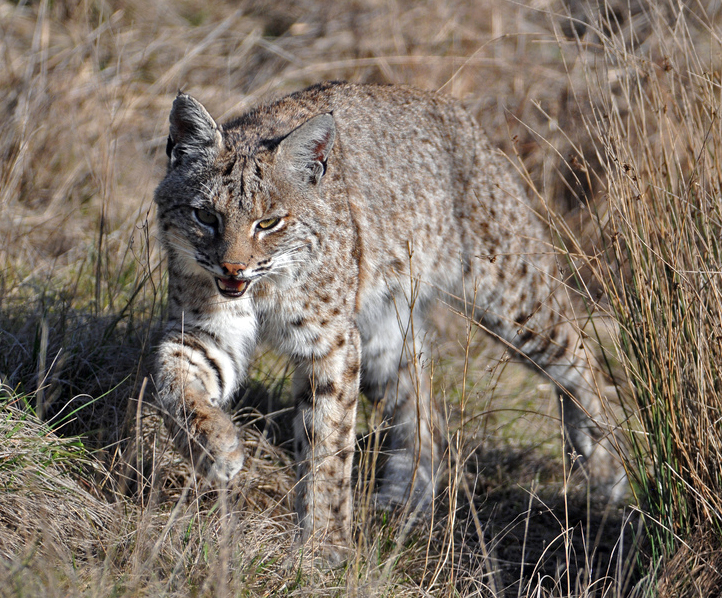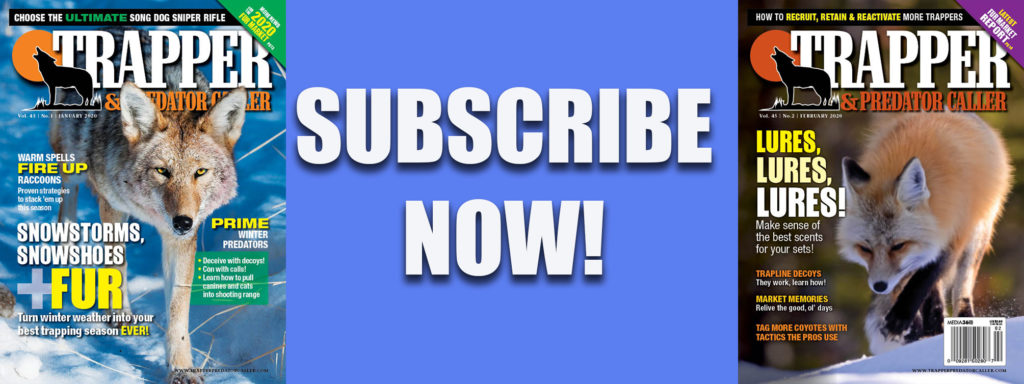
By Jim Spencer
I’m still far from being what I’d consider a good bobcat trapper. Mark June, Mike Bailey, John Graham, Matt Jones and their peers don’t need to worry about me stealing their thunder. But this past season of specifically targeting bobcats taught me some things.
Here, in no particular order, are a few other tips I think are important:
- Use polyfill not only for flagging but also under the pan of your trap. This pretty much eliminates the need for pan tension. The polyfill provides enough resistance to keep mice from springing the trap and gives the bobcat support enough to get its foot in the right position before the trap fires.
- Don’t box in your bobcat sets. Every ’cat set should be open-ended. That is, it should give the bobcat the option of walking on through the set rather than having to back out of it. Bobcats don’t like to back up.
- On wider travelways, use brush to narrow the potential pathway. It doesn’t take much, just a bushy limb or two, and you can nudge a bobcat onto a narrower travelway and right into your trap.
- Bobcat feet and gray fox feet, especially fresh, are an excellent attractor for bobcats. Just poke them down the lure hole or hide them in the scratch-up pile.
- Ditto bobcat turds. Collect every one you can find, and don’t overlook those fresh ones you’ll often find at the edge of the catch circle when you catch a ’cat. Save them in pill bottles, and use them at your sets. They can be freshened up with a squirt of bobcat or fox urine.
- Leave sets longer than you would for canines or other furbearers but not too long. That sounds ambiguous, I know, but I don’t really know the proper length of time. Somewhere between two and three weeks would be my guess. If you move your sets after a week, you’re going to be leaving some bobcats behind.
- Keep your sets well-maintained. Refresh the urine every three to four days, and relure after six or seven days.
- Don’t ignore history. If you caught a bobcat there last year or the year before or the year before, it’s probably still a good set location.
- Set on sign if possible, but don’t fail to set a good-looking spot just because you don’t find sign. Like mink, bobcats sometimes don’t leave much evidence of their passage.
- Always, always, always make at least two sets at a given location. Bobcats, especially families and sometimes old mature toms, often travel in pairs or groups. Also, a bobcat can’t get in your trap if there’s a raccoon, fox, coyote or other critter already in it.


Thanks very much. Here in NJ I have snared Red Fox. Bobcats I will begin to later in life. Small easy mistakes take place all the time when trying to catch your game. Here I picked up that small bit which may help here in NJ if the season shall ever be established.
Coyote have entered the area which years ago one would never have expected. Everything is possible, ha ha, They do have bobcats in the North West N. Jersey & the Catskills so all on might be able to possible expect. I too, understand that N. Jersey has bobcats today. Not far from here in NJ.
Thanks very much,
Pete